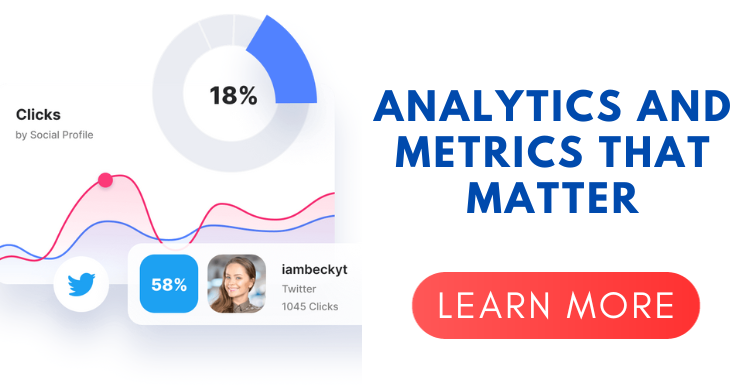What are digital products
Digital products are intangible assets or media that can be sold and distributed multiple times on the internet without having to restock inventory. They commonly take the form of downloadable or streamable digital files like MP3s, PDFs, videos, plug-ins, and templates.
Why sell digital products versus physical goods
Digital products possess several advantages that render them remarkably appealing for selling purposes.
- Low overhead costs.You don’t have to hold inventory or incur any shipping charges.
- High profit margins. There’s no recurring cost of goods, so you retain the majority of your sales in profits.
- Potential to automate. Orders can be delivered instantly, letting you be relatively hands-off with fulfillment.
- Flexible products. You can offer free products to build your email list, monthly paid subscriptions for access to exclusive digital content, or licenses to use your digital products. You have a lot of options as to how you incorporate digital products into your business.
- E-learning is the future of education. You have a massive opportunity to expand your business and impact with e-learning, an industry expected to be worth $374 billion by 2026.
However, there are also particular challenges that you must be cautious of when dealing with digital products.
- You’re competing with free content. With digital goods, consumers can probably find free alternatives to what you’re selling. You’ll have to think carefully about the niche you target and your product descriptions, offer high-quality products, and know how to build your brand in order to compete.
- You’re susceptible to piracy/theft. You need to take precautions and reduce these risks by employing the right tools to protect your products.
- There are some restrictions on how you sell. For example, you must sell physical products through the Facebook and Instagram sales channel according to their commerce policy.
By employing the appropriate tools during the design of your digital product business, you can overcome most of these challenges.
How to create digital products
Finding a good business idea involves a step-by-step process, rather than waiting for a sudden moment of inspiration. While it is important to have an exciting idea, if you aim for an idea that is successful, you should follow the steps of brainstorming, conducting research, and validating it.
1. Brainstorming
To begin, come up with various ideas and record them without judgment. It is important not to be overly critical as both good and bad ideas can be beneficial. The essential aspect of brainstorming is to avoid overanalyzing. If you need inspiration, consider asking yourself the following questions:
- Can you teach customers how to use your products? For example, if you sell knitting products, you could offer appointments to teach advanced knitting techniques.
- Are there things you can help your customers with related to your overall industry? If you sell surfboards, you could create a workout program to help your customers stay in surf shape at home.
- What are the values you’ve built your business on, and what are topics related to them? For example, if you sell sustainable apparel, you could create a course teaching your customers how to live a more sustainable life.
- In what ways could you bring your community of customers together? If you sell kitchen supplies, you could run a virtual guided wine tasting event.
- What are you good at? If you’re really great at product photography, you could teach other people how to get better at product photography too.
2. Research
In order to generate ideas, conduct research to expand your list. Explore pain points experienced by your customers, whether they are related to your product, industry, or values, as well as topics that they have a strong interest in or are enthusiastic about. These areas present excellent possibilities for creating educational products that offer value to your customers and can contribute to your business success.
If you’re looking to start your research, below are a few reliable places to consider.
- Facebook groups. There are Facebook groups dedicated to every niche and audience imaginable, making them a great place to learn what your potential customers care about.
- Industry forums. Forums dedicated to hobbies and communities in your industry can help you learn more about what people want and need in your broader industry.
- Product reviews. Read both the reviews for your products and competitors’ products to get ideas. These could come from the reviews on product pages as well as stand-alone reviews on blogs and other websites.
- Blog posts and comments. Read the blog content your community might be reading, as well as the comments, to get even more ideas. For example, if you sell auto parts, dig around on automotive blogs.
- Emails from customers. Finally, don’t forget to go back and reread any emails or messages you have gotten from customers over the years. The people who took the time to contact you with thoughts and concerns are usually “high intent” customers and they might have shared some really useful insights.
3. Validation
Before investing significant time or resources in an idea, it is important to validate its viability and ensure its solidity. It is crucial to avoid allocating excessive time or financial resources to a new venture without having sufficient knowledge of its potential for success.
There are a few methods for validating your idea.
- Keyword research. Use a keyword tool to see how many people are searching for your topics. This will give you an idea of the opportunity size of each one.
- Google Trends. Search your topics on Google Trends. Look for topics that are growing in interest. This means the opportunity size will keep growing.
- Ask for feedback. Contact your customers directly, either through email or social media. A poll or survey is a great way to collect customer feedback.
- Start small and iterate. Sometimes, the easiest way to validate an idea is to experiment with a smaller version of the idea with room for growth. The goal is to get something out into the world as soon as possible so you can put your idea to the test and improve from it from there.
Regardless of the industry you belong to, your customers will find value in your distinct strengths and knowledge.
4. Create an online store
Once you have confirmed the viability of a digital product idea, your next step would be to acquire an ecommerce platform for selling purposes.
With its simplicity and strong reputation, Shopify offers the simplest means to establish an online store. It requires no technical expertise or substantial financial resources, and offers a selection of more than 100 templates equipped with integrated features for quick setup—all at the affordable cost of $39 per month. Furthermore, Shopify provides access to over 4,000 free apps to effectively handle your store and enhance online sales of digital products.
Digital product ideas to sell online
Instead of individually listing the numerous digital products available for online sale, we will discuss eight broad categories encompassing all of them. Additionally, we will provide some ideas to help kickstart your journey.
1. Online courses
If you possess expertise and a desire to share it with the world, teaching online can provide an opportunity to generate additional income by transforming your existing knowledge into a fresh revenue stream. Selling an online course, a digital product that aligns perfectly with your passion, would be an ideal choice.
By launching a digital course, you can cater to people’s eagerness to learn from home, whether it be for acquiring a new hobby or improving professionally.
Creating online courses is appealing because it is not limited to traditional classroom settings such as high school and university, or to corporate trainers adjusting to remote onboarding. Additionally, formal training as an educator is not required.
2. Memberships
If your aim is to generate consistent income by creating and supporting a community over time, then offering a membership is an ideal digital product to sell. Whether your intention is to sell a sequence of online courses or charge members for accessing your expertise, a membership website can assist in establishing a regular monthly income.
Membership sites can be created by anyone with niche expertise and a passion for sharing it with the world, as demonstrated by these examples. These sites are not limited to any particular type of business.
By obtaining a paid community membership, students are provided with the opportunity to engage in exclusive discussion groups, workshops, and Q&A sessions. Subscribing to these privileges ensures a consistent and predictable source of income for their teacher.
3. Graphic design work
If you work as a graphic designer, you possess the necessary tools to produce digital items that can be sold. This is because fellow designers, including those facing time constraints, are in search of the components required to enhance the quality of their work.
There is a wide range of digital products that you can create and sell on the side while working with clients on a daily basis, including vector icons, textures, objects, and typefaces. If you have a passion for design, it provides an opportunity for your creativity to shine beyond client projects.
4. Music and audio
At least, the internet is alive with the sound of music. Podcasters, YouTubers, bedroom pop stars, film producers, and marketing teams all employ audio in some way or another, and they all seek that unique element to differentiate their work.
Some examples of audio products are:
- Beats and instrument samples
- Plugins for music software
- Stock music
- Sound effects
5. Stock photography
Stock photos have a negative reputation. We are all well-acquainted with the stereotype: a model placed in an uncomfortable position, engaged in an unclear action against a plain white backdrop. Alternatively, we may think of Hide the Pain Harold, a widely recognized internet phenomenon.
If you possess an eye for light, color, and framing, you can earn a steady side income by selling your photos online. Just browse Unsplash for inspiration, as there are indeed stunning stock photography options available.
6. NFTs
NFTs, short for non-fungible tokens, belong to the newer segment of the cryptocurrency realm and are incorporated within the Ethereum cryptocurrency blockchain. Nevertheless, they possess additional data that sets them apart from Ethereum coins. This article provides a straightforward and concise explanation of NFTs.
When it comes to digital products on this list, opting for NFTs is undeniably a riskier decision due to the limited understanding of the market’s durability. Additionally, there are no assurances regarding the potential value of the NFT you select for selling.
If you are already creating digital art, NFTs could be a viable choice for you. Although NFTs encompass a wide range of digital items, the current buzz mostly revolves around the sale of digital art. Various platforms are available for purchasing and selling NFTs, with certain marketplaces like OpenSea offering an easy-to-use interface for creating your own NFTs.
7. Software and games
There is a significant demand for software and digital games, and it is common knowledge. Both of these digital products necessitate coding expertise for creation, and they can generate substantial profits for individuals with a development background. If you lack the technical abilities to build a product on your own, working with someone who possesses those skills is worth considering if you’re interested in entering the software or gaming market.
Software encompasses a wide range of solutions and programs that function with the aid of code, such as mobile apps, web apps, desktop software, and various other alternatives.
When considering the type of software you would like to sell, keep in mind the disparity in effort required between a basic mobile game and complex accounting software. Selling smaller, niche software offerings may be a quicker path to earning money.



